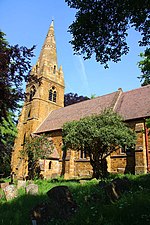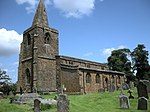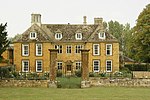Burton Dassett Hills

Burton Dassett Hills Country Park is a country park in southeastern Warwickshire, England. It was created as a country park in 1971 and is run by Warwickshire County Council. The area comprises a group of ironstone hills, which are named after the village of Burton Dassett which is located in the hills. The hills rise to 211 m (692 ft) above sea level and are situated half a mile east of the M40 motorway. The area was once extensively quarried for ironstone and a short industrial railway – Edge Hill Light Railway – existed for this purpose until the 1920s. Of interest at the site is a 12th-century parish church at the old village of Burton Dassett. Outside the church is a holy well which still provides water. The park is also popular with flyers of kites and radio-controlled gliders. Impressive views across the surrounding countryside can be seen from the hills; towns and other features that are viewable are described by a toposcope. On a clear day, places as far afield as Coventry (more than 20 miles away) can be seen. The park and the church were used as a location in the Tom Selleck 1990 film Three Men and a Little Lady.
Excerpt from the Wikipedia article Burton Dassett Hills (License: CC BY-SA 3.0, Authors, Images).Burton Dassett Hills
Stratford-on-Avon
Geographical coordinates (GPS) Address Nearby Places Show on map
Geographical coordinates (GPS)
| Latitude | Longitude |
|---|---|
| N 52.164425 ° | E -1.421475 ° |
Address
CV47 2TX Stratford-on-Avon
England, United Kingdom
Open on Google Maps






